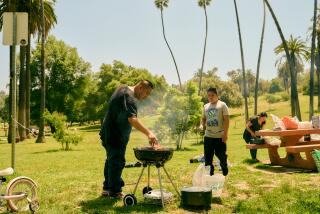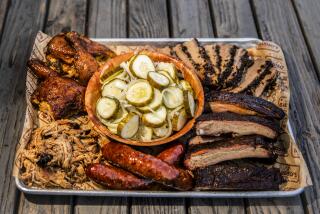Video: Why grilled meat tastes so good, according to science
Want to make a steak taste good? Throw it on the grill, and don’t forget the salt.
But why does the combination of meat, charcoal and fire taste so good? The American Chemical Society has some answers.
Just in time for one of the biggest grilling days of the year, the organization has put together a video explaining the wonders of grilled meat, along with a couple grilling tips. You can view it above.
And as you read the rest of this post, we kindly ask that you read it in Food Network star and super food geek Alton Brown’s voice. It’s just better.
For one, before your meat hits the grill, make sure it’s red, not gray. And if you’re wondering where that red color comes from, it’s not blood.
As the video explains above, a protein called myoglobin helps store oxygen inside cells and cow muscles. This protein happens to have a red pigment, so the more myoglobin in your steak, the darker it will be.
That red turns to a tan color when oxygen is released from the myoglobin at around 140 degrees Fahrenheit, and at 168.8 degrees Fahrenheit, the myoglobin turns a grayish, dark brown color.
That’s when the Maillard reaction kicks in — the key to making all caramelized food taste good. In short, the Maillard reaction is actually a bunch of reactions between amino acids and sugars happening at the same time. This creates richness and browning. And in our mouths, flavor.
The video advocates charcoal grilling over gas grilling for maximum flavor. Charcoal and smoke from wood chips create extra flavorful aromas. And when juice drips from your meat onto the charcoal, it creates more aromatics for one big, continuous wheel of flavor.
And whatever you do, don’t overcook your meat.
I like my steak medium rare. Folow me on Twitter and Instagram @Jenn_Harris_
More to Read
Eat your way across L.A.
Get our weekly Tasting Notes newsletter for reviews, news and more.
You may occasionally receive promotional content from the Los Angeles Times.











